- Growing Viral
- Posts
- LINKEDIN ADS: THE PLAYBOOK PEOPLE IGNORE
LINKEDIN ADS: THE PLAYBOOK PEOPLE IGNORE
4 key learnings on LinkedIn ads that not enough people are paying attention to...
Morning!
I’m writing this on yet another sunny Saturday in Manchester. But while you imagine full beer gardens, putting shorts on and having a great day. I sit here in an apartment turned sauna, feeling sweat drip down my forehead as I tap these keys.
But today, I’m going to give you the inside scoop on some research I’ve been doing over the last few weeks.
(Don’t tell your friends what you learn here. I’m trying to keep it a secret)
LISTEN TO THE AUDIO VERSION
BREAKING DOWN THE STRATEGY
The mindset in B2B is fundamentally different to B2C, and rightly so.
Over the last 4 years, I’ve worked with more than 100 B2B companies. From global giants like the NHS to ex-Premier League footballers turned business owners, I’ve seen all sides of the B2B world.
And one thing has become painfully clear:
Most B2B brands are allergic to what works in B2C.
In B2C, it’s content and community first.
In B2B, it’s “how many leads did that get us?”
In B2C, it’s humans everywhere.
In B2B, it’s hiding behind a company logo.
In B2C, attention is the goal.
In B2B, it’s sales or nothing.
But here’s the thing… They’re supposed to be different.
B2C brands are often backed by VC money, chasing scale and virality. B2B companies are usually bootstrapped, private, and focused on sustainability. That changes how you operate, how you sell, and how you market.
Which is exactly why, even as someone who’s helped generate millions of views for B2B brands through organic content, I understand the desire for predictability.
Because in B2B, attention is welcomed, but leads are what keep the lights on.
That’s why right now I’m looking deeply into developing my knowledge of LinkedIn ads. Everyone says they’re “expensive”, but they’re comparing apples to oranges.
I think there’s an opportunity here. So I’ve spent the last few weeks studying everything I can on LinkedIn ads and how they work.
Today, I wanted to share my learnings so far. I’ll try to keep this as top-level as possible without going into the technicalities.
Learning 1: Start With Remarketing, Not Prospecting
People in B2B seem to love the idea of putting in the work to drive leads. That’s why prospecting is so popular. CEOs like to walk over to their sales team and see them aggressively calling prospects, hounding them with emails and getting them in a meeting by any means necessary.
But from what I’ve seen, this does not work as an approach for LinkedIn ads.
Which is one of the many reasons they’re labelled so expensive, because so many brands run direct response ads to a cold audience and then wonder why their Cost Per Lead is so high.
You can’t jump straight into cold prospecting, targeting job titles and company sizes, burning through budget on people who've never heard of you. It's like walking into a party and immediately asking strangers to marry you.
Don't waste spend on people who don't know you. Start with the ones who already do.
That’s why the best approach I’ve seen (After studying 40+ strategies) is to start with…
Remarketing Campaigns.
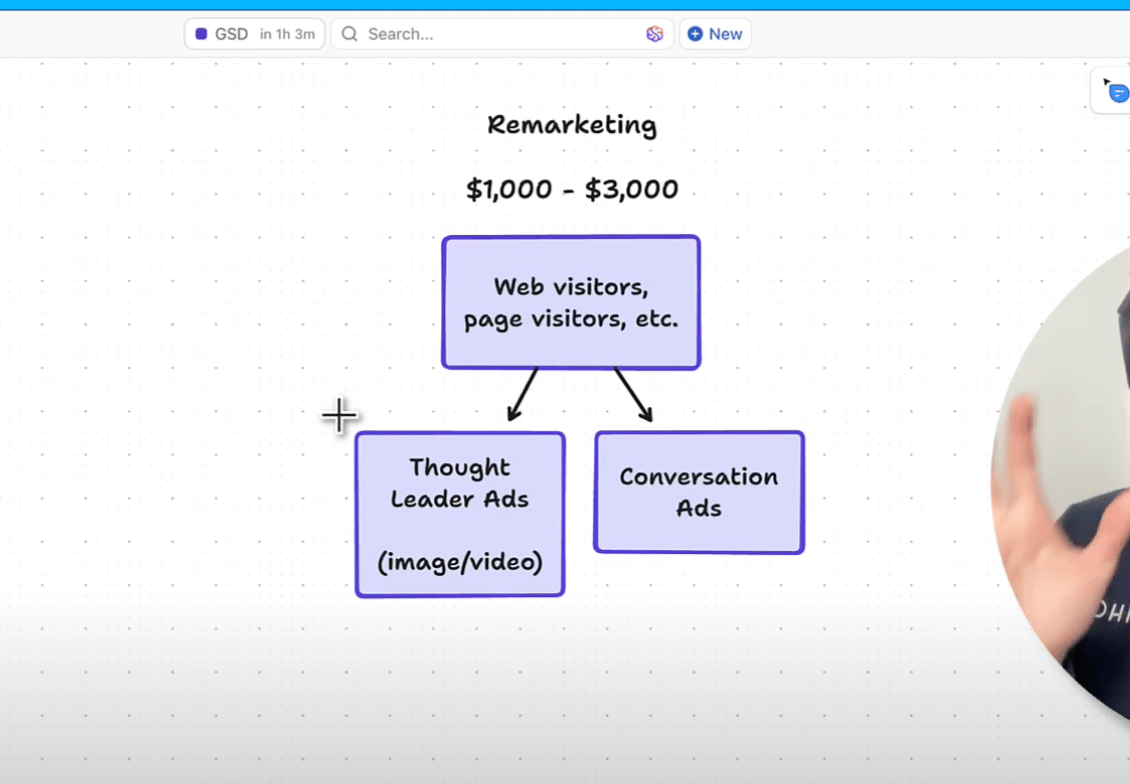
This means you show ads only to people who have already visited your website, profile, or read your content - preferably your site though. LinkedIn tracks visitors to your site (through a small piece of code called a pixel) and lets you advertise specifically to them.
Target people who've hit high-intent pages like your pricing page, case studies, or "about" page. These are your warmest prospects who just need a nudge.
For remarketing, use two types of LinkedIn ads:
Thought Leader Ads - These are posts that appear to come from a real person (like your CEO) rather than your company page. They show up in people's LinkedIn feeds looking like regular posts, not obvious ads. They get better reach and cost less because LinkedIn treats them more favourably.
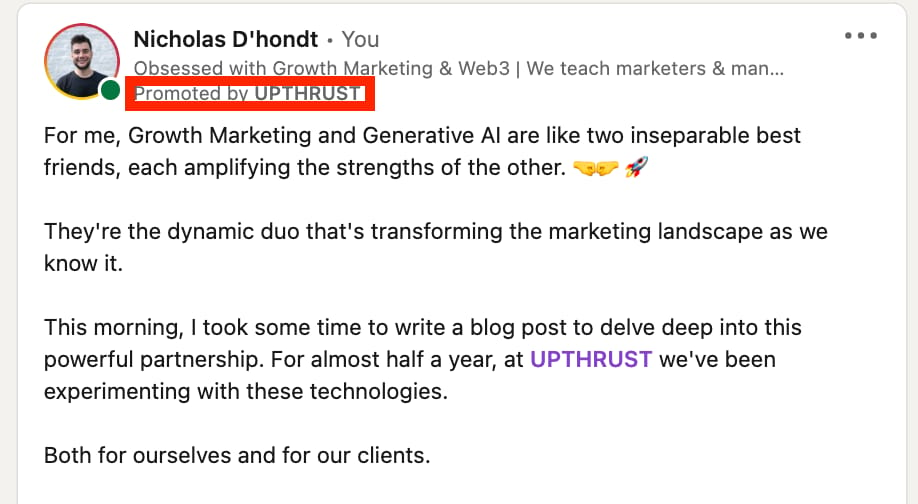
Conversation Ads - This is LinkedIn's secret weapon that no other platform has. You can literally send direct messages to people who've seen your ads. It's like sliding into someone's LinkedIn DMs, but targeting only people who already know your brand. These convert much better on warm traffic because it feels personal.
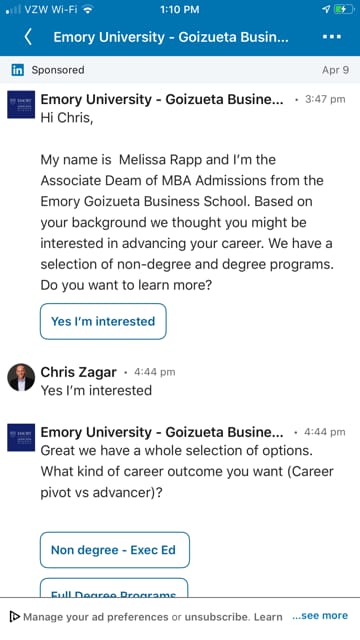
NOTE: Everyone seemed to recommend $ 1,000 - $ 3,000/month to start.
Learning 2: Layer In ABP
Once remarketing is working, you can test running ads to colder audiences. But the key here is not to go so broad.
Most people target something like "Marketing Directors in the UK,” But when you do that, you're advertising to Marketing Directors at tiny startups and massive corporations - both of which have very different problems and will react to very different things.
That’s why I lot of LinkedIn ad experts say you should build “Your Dream List”.
It’s funny, because I was reading the book Traction by Gino Wickman while researching for this, and one of his number one recommendations is that companies build something he calls "The List” - a list of dream companies that they want to work with.
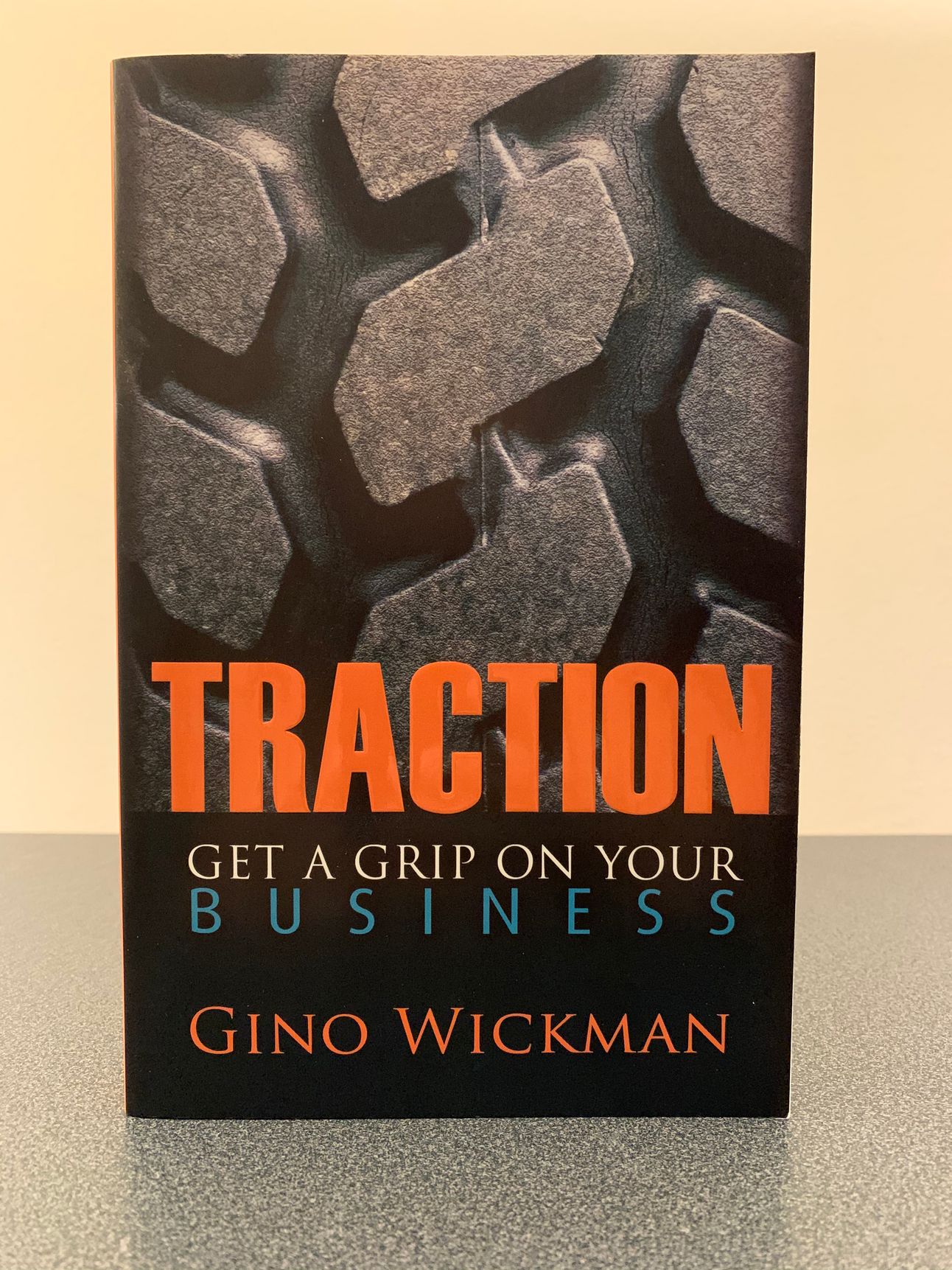
Once you’ve done that, you can use LinkedIn ads to go after them.
Here's how:
1/ Upload your specific list of target companies to LinkedIn.
The platform lets you upload a CSV file with company names, and then you can target only employees at those companies.
2/ Then layer job title filters on top.
So instead of "Marketing Directors everywhere," you're targeting "Marketing Directors at these 200 companies we actually want as clients."
This is account-based prospecting (ABM) in action. You're not spray-and-praying across LinkedIn. You're surgically targeting the exact people at the exact companies you want to work with, then using ads to get their attention and book meetings.
The coolest thing about this for me is that you can target entire departments at specific companies. Making your company constantly top of mind for them (which would be great paired with an outbound approach too).
Learning 3: Don’t Send People To Your Website
Just like using organic distribution (content, etc), sending people to your generic website is rarely ever a good idea - this is just emphasised when you’re paying for that traffic.
Companies spend thousands driving LinkedIn traffic to their homepage, then wonder why conversion rates are terrible. But your homepage is built for people who already know what you do. Cold traffic from ads has no idea why they should care.
The solution I kept seeing was lead magnets (we discovered this long ago on the organic side).
Here’s how to create one that drives new leads:
Create something specific - a guide, quiz, report, framework - that solves one clear problem for your ideal client.
Position it in a way that shows a transformation they can go on (from A to B).
Build a custom landing page filled with context on who you are and why you’re credible
Have an email follow-up sequence to educate them post signing up/downloading to give them more context and feed them case studies and credibility
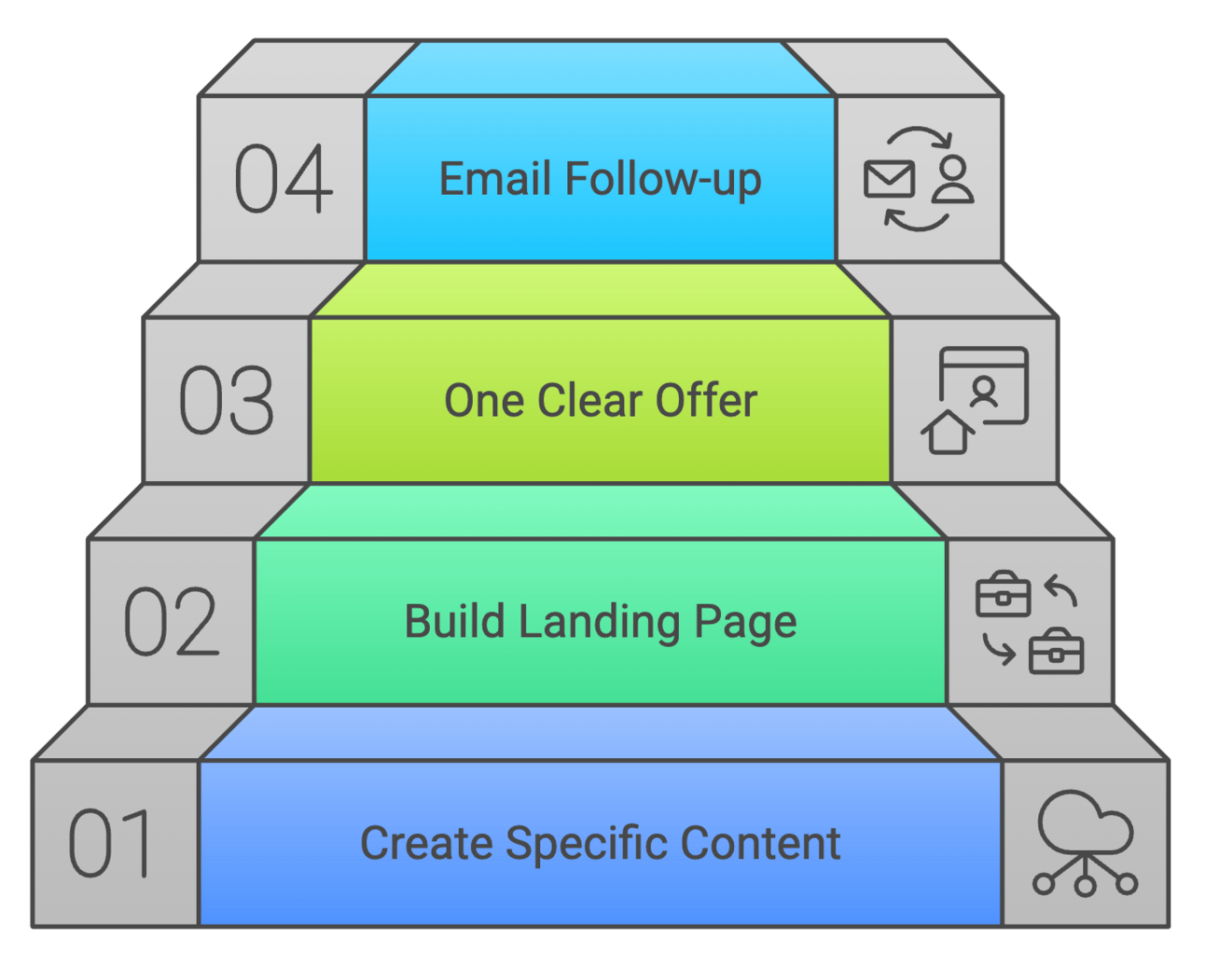
The logic makes sense: cold traffic needs education before they're ready to buy. Give them a reason to raise their hand first, then nurture them toward a sale.
Learning 4: Choose The Right Campaign Objective
This was confusing at first, but it's obviously crucial. When you set up a LinkedIn ad campaign, the platform asks you to choose an objective. This tells LinkedIn what you want people to do, and it changes how much you pay and who sees your ads.
Here's what I learned each one means:
Brand Awareness - LinkedIn shows your ad to as many people as possible for the lowest cost. You pay based on impressions (how many people see it), not clicks. Good for getting your name out there, but hard to measure real impact.
Website Visits - You pay each time someone clicks your ad. LinkedIn optimises to find people most likely to click. Use this if your website converts visitors well and you want to drive traffic.
Engagement - LinkedIn pushes your posts to more people organically. This boosts your Thought Leader posts and builds social proof through likes and comments.
Lead Gen Forms - LinkedIn shows a form directly in the platform when someone clicks your ad. They don't have to leave LinkedIn to convert, so conversion rates are higher. But the leads are often lower quality because it's too easy to submit.
Website Conversions - The most expensive option, but LinkedIn optimises for people most likely to take action on your site (like booking a call or downloading something). Only use this if your funnel is proven to work.
From what I've researched, it's best to start with Website Visits or Engagement until you know your funnel converts. Only upgrade to Lead Gen or Conversions when your offer is dialled in.
🌱 THE GREENHOUSE
Things I’ve saved this week that are worth seeing:
This breakdown on the Traction book. A book I highly recommend. (See Here)
SIGNING OFF!
That’s all I’ve got for you this week!
If you found it useful, please share it with a friend :)
Until next Sunday.
— Niall
WAIT… BEFORE YOU GO
Rate this week's breakdown |
BROUGHT TO YOU BY
Modernize Out Of Home with AdQuick
AdQuick unlocks the benefits of Out Of Home (OOH) advertising in a way no one else has. Approaching the problem with eyes to performance, created for marketers and creatives with the engineering excellence you’ve come to expect for the internet.
You can learn more at www.AdQuick.com
